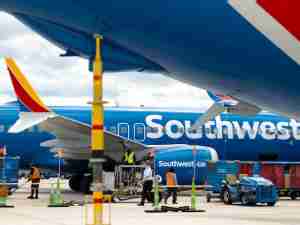Brussels Airport Attack a Rarity After Post 9/11 Clampdown
By: | Mar 22 2016 at 08:17 AM | Air Cargo
The terrorist attack on Brussels airport was only the third against an aviation hub in the past decade to claim a death toll in double figures following the worldwide security clampdown in the wake of the Sept. 11, 2001, attacks on the U.S.
Tuesday’s attack on the Belgian capital’s Zaventem hub, which killed at least 11 people, is the bloodiest at an airport since 2014, when the Pakistani Taliban raided an aircraft maintenance facility next to Karachi’s Jinnah International terminal, resulting in the deaths of 26 workers and 10 militants.
The Brussels event, in which two explosions occurred in the departure hall, may bear closer comparison to the suicide bombing at Moscow’s Domodedovo airport in January, 2011. The attack in the arrivals hall of eastern Europe’s busiest air hub killed 37 people, with Chechen rebels claiming responsibility.
Terrorists have largely eschewed attacks on airports and planes as security measures spanning armed patrols, full-body scans and shoe checks through reinforced cockpit doors, sky marshals and bans on everything from liquids to nail clippers make air travel one of the most rigorously policed activities.
Landside Attacks
The destruction of a Russian Metrojet airliner over Egypt in October was particularly unusual in that international experts suggest it was brought down mid-flight by a bomb that may have evaded security checks on the ground. Prior to that, the last confirmed bombings involved two other Russian aircraft brought down in 2004, though a number of plots have been foiled.
In the Brussels incident, like the Domodedovo attack, militants appear to have detonated bombs while still landside, meaning that they hadn’t passed through security checks where any weapons or explosives should be detected.
While major airports mostly have armed patrols in arrival and departure halls even in countries where police don’t usually carry guns, such as the U.K., people are still generally able to walk in off the street as far as check in counters or customs exits. Some hubs, including many in Asia, have introduced metal detectors at all entrances to help mitigate the threat.
Glasgow Ram-Raid
Most attacks on airports in the past 10 years have either failed, or claimed a small number of victims.
In 2007, two Islamist militants attempted to ram an SUV loaded with gas canisters into the passenger terminal of Glasgow airport in Scotland, only for the vehicle to be held up by posts outside the main door. The driver died from burns sustained in the subsequent fire.
The most recent terror event at an airport before today saw a cleaner killed at Istanbul’s Sabiha Gokcen terminal in December in an attack claimed by Kurdish militant group TAK, which said it had perpetrated with a mortar bomb. Aircraft on the apron were also damaged.
Two people were killed and 52 injured in 2006 when a van bomb exploded at Madrid Barajas airport. Basque separatist group ETA claimed responsibility.
With airlines and airports relatively secure compared with the pre-9/11 environment, Islamist terrorists have directed attacks on the West at a wider range of targets, with November’s Paris outrages focused on restaurants, bars, a music venue and the Stade de France sports arena.
Takeoffs and landings at Brussels Zaventem were halted until Wednesday morning at least following the blasts, with incoming flights diverted to other Belgian airports. The Brussels subway network was also shut down after an attack at a station.









